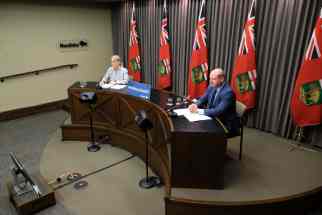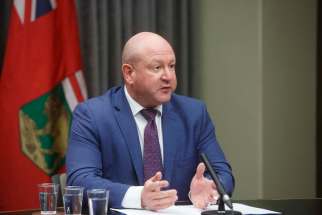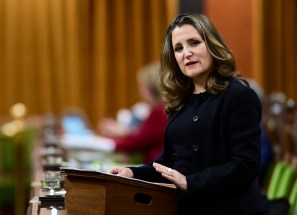No end in sight to Ottawa’s pandemic spending
Read this article for free:
or
Already have an account? Log in here »
To continue reading, please subscribe:
Monthly Digital Subscription
$0 for the first 4 weeks*
- Enjoy unlimited reading on winnipegfreepress.com
- Read the E-Edition, our digital replica newspaper
- Access News Break, our award-winning app
- Play interactive puzzles
*No charge for 4 weeks then price increases to the regular rate of $19.00 plus GST every four weeks. Offer available to new and qualified returning subscribers only. Cancel any time.
Monthly Digital Subscription
$4.75/week*
- Enjoy unlimited reading on winnipegfreepress.com
- Read the E-Edition, our digital replica newspaper
- Access News Break, our award-winning app
- Play interactive puzzles
*Billed as $19 plus GST every four weeks. Cancel any time.
To continue reading, please subscribe:
Add Free Press access to your Brandon Sun subscription for only an additional
$1 for the first 4 weeks*
*Your next subscription payment will increase by $1.00 and you will be charged $16.99 plus GST for four weeks. After four weeks, your payment will increase to $23.99 plus GST every four weeks.
Read unlimited articles for free today:
or
Already have an account? Log in here »
Hey there, time traveller!
This article was published 30/11/2020 (1840 days ago), so information in it may no longer be current.
A crucial caveat expected in Monday’s fiscal statement from Ottawa failed to manifest: there is no end in sight to federal spending amidst the COVID-19 pandemic.
As Canada stares down a nearly $400-billion, record-high deficit for 2020, the Liberal government plans to spend up to $100 billion over the next three years, along with a further $25.1 billion in immediate measures to support workers and businesses affected by the novel coronavirus.
That’s not all.
In a long-awaited speech from the House of Commons, Finance Minister Chrystia Freeland did not provide a spending cap to draw any red lines around the limit to which the feds will continue funnelling toward an economic recovery she acknowledged is still well-off the horizon.
Not only is the newly-announced additional spending currently unaccounted in the government’s fiscal framework, the ultimate size and timing of future investments could also vary, depending on the evolving health and economic situation.
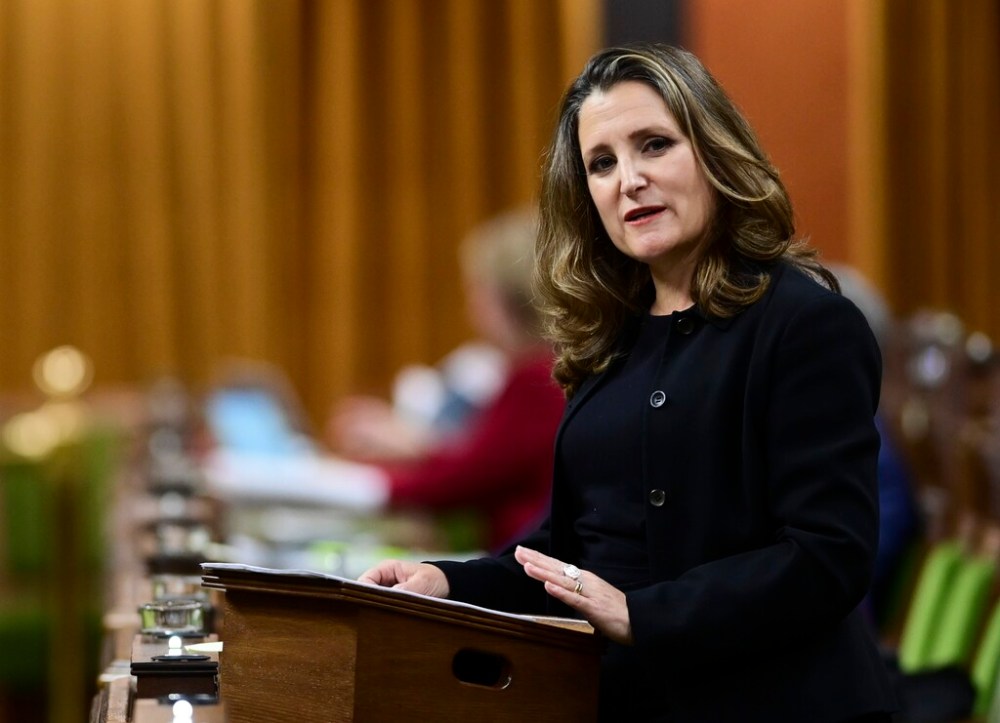
“We will invest every single necessary and helpful measure,” said Freeland, adding $8 out of every $10 spent on fighting the pandemic will continue to come from Ottawa.
“We will support Canadian families and businesses in a deliberate, prudent and effective way.”
Providing future tax targets and economic measures in what is essentially a mini-budget, and currently Canada’s only financial blueprint for the future, Freeland said the government’s immediate priority is to do whatever it takes to help Canadians stay safe and solvent.
“When the economy has recovered, the time-limited stimulus will be withdrawn and Canada will resume a prudent and responsible fiscal path,” Freeland said at a news conference Monday. “We don’t have a long-term fiscal anchor for now. That will come when the economy is more stable.”
Until then, she told reporters, the government will rely on fiscal guardrails, such as the employment rate and total hours worked. But she admitted the specific details on those “guardrails” aren’t yet available.
“More information will be released on that in the coming months,” said Freeland. “And I have to say, government debt is highly affordable now because of Canada’s strong economic performance in the past and low interest rates.”
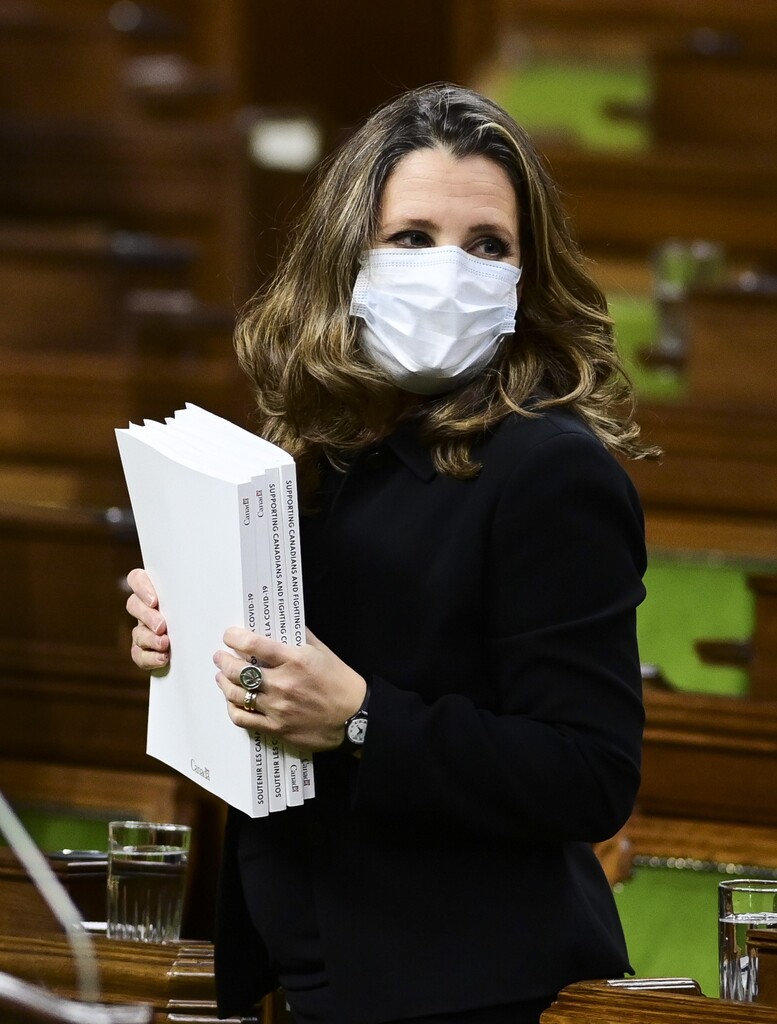
To pay for it all, Canada will continue to borrow against current debt loads and will run a deficit which is the largest budget shortfall since the Second World War.
For investors, commerce stakeholders and the independent parliamentary budget office, that means Monday’s announcement is a source of worry. Nine months into COVID-19, they are troubled Canada will continue spending funds at the risk of unsustainable costs in the future.
“I’d say I’m surprised, but really I’m not,” said Don Drummond, an economist at C.D. Howe Institute. “This is the government’s way of squaring demands, and it’s frankly highly unmanageable if they just want to keep spending all this money without any end to it.”
Drummond said the lack of a spending cap is also a problem for public accountability.
“It’s not that I don’t think they should be spending funds to help people during this crisis,” he said. “The problem is that there’s no end to it when we also haven’t had a budget in a year-and-a-half.”
Kevin Page, who leads the University of Ottawa’s Institute of Fiscal Studies and Democracy, said the economic update also failed to deliver a message to markets and bond-rating agencies to address concerns about the growing size of the federal debt.
Financial update for Manitoba
wfpsummary:Ottawa’s economic update will likely result in a boost for Manitoba nursing homes and schools.
The economic statement tabled Monday plans for a new $1 billion for provinces to protect residents of personal care homes, for anything from boosting infection control to topping up staff wages, as long as the money is allocated based on residents in these facilities.
The money would be split equally between the current fiscal year and the next, which ends in March 2022. Federal pandemic supports have generally been issued to provinces on per capita basis, suggesting Manitoba care homes would receive $36 million over the two years.
The Monday update also promises $2 billion for schools to adapt to technology, improve ventilation systems and provide hand sanitizer and protective gear, which would be about $72 million on a per capita basis. That money is supposed to flow before April.
A top-up to the Canada Child Benefit will mean up to $1,200 in extra funding per child next year. But there is no clear strategy for child care other than to study the issue.:wfpsummary
Ottawa’s economic update will likely result in a boost for Manitoba nursing homes and schools.
The economic statement tabled Monday plans for a new $1 billion for provinces to protect residents of personal care homes, for anything from boosting infection control to topping up staff wages, as long as the money is allocated based on residents in these facilities.
The money would be split equally between the current fiscal year and the next, which ends in March 2022. Federal pandemic supports have generally been issued to provinces on per capita basis, suggesting Manitoba care homes would receive $36 million over the two years.
The Monday update also promises $2 billion for schools to adapt to technology, improve ventilation systems and provide hand sanitizer and protective gear, which would be about $72 million on a per capita basis. That money is supposed to flow before April.
A top-up to the Canada Child Benefit will mean up to $1,200 in extra funding per child next year. But there is no clear strategy for child care other than to study the issue.
Similarly, the Liberals gave no indication of a boost to federal health transfers, a long-standing demand of Manitoba Premier Brian Pallister.
Prime Minister Justin Trudeau is expected to meet virtually with premiers next week about whether he should change the formula.
Asked why her economic statement had no indication of increasing health transfers, Finance Minister Chrystia Freeland said her government’s priority is on pandemic-specific supports.
In a statement late Monday, Pallister said while he is pleased to see the commitment to supporting small businesses, he wants to see more for health care.
“We need the federal government to make a real commitment to a renewed and strengthened federal-provincial partnership on health care,” he said. “The percentage of federal support has never been lower; the need for more health-care funding has never been higher. COVID-19 has made that need even greater.”
— Dylan Robertson and Temur Durrani
He pointed to a recent IMF report, which showed Canada’s deficit — combining federal and provincial numbers — is the largest this year among almost all advanced economies, when measured as a percentage of GDP, with debts well below comparable countries.
“But I also understand the other pressures they have had from provincial governments and business groups to keep spending, so it’s a difficult situation,” said Page.
Monday’s report also forecasts $11 billion in non-announced measures for the next five years. That’s 10 times the amount forecast under that heading for same period in the 2019 report. It remains unclear whether those will go towards coronavirus-related support or elsewhere.
“I believe there should be a very public inquiry into this completely unclear and growing spending that will definitely cause significant harm in the future,” said Drummond.
The outlook also mentioned federal debts as a percentage of GDP, before including the new stimulus. It showed those percentages will climb from 31.2 per cent from last year to 50.7 per cent this year, and 52.6 per cent next year. Following which, it will continue to decline.
Those are numbers that have never been seen before, even in previous recessions.
The finance minister said the risks associated with not providing enough economic support right now outweigh those involved in spending too much. Freeland said Ottawa will not repeat the mistakes made following the 2008 recession, when the federal government introduced austerity measures to rein in spending.
“We are all tired. But we also know vaccines, and a better day, are coming. To get to that day, we must first help each other get through the winter,” she said.
Twitter: @temurdur
temur.Durrani@freepress.mb.ca


